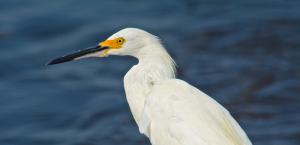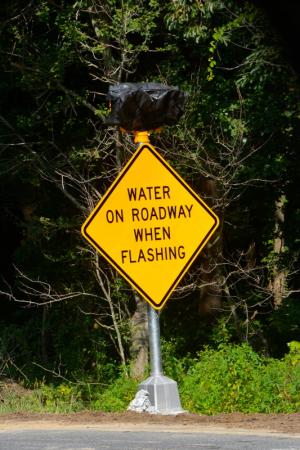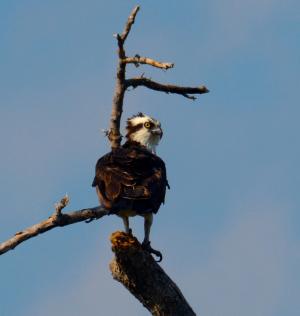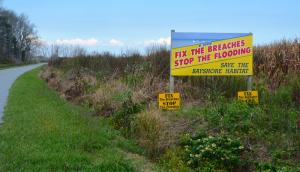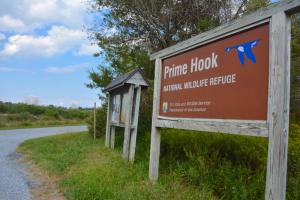Prime Hook restoration could begin next summer
This time next year, work should be well underway to fill in the breaches and rebuild the beachfront along the Delaware Bay shoreline in Prime Hook National Wildlife Refuge.
The refuge has received nearly $40 million in federal funds to not only restore the beach and fill in breaches, but to also begin the long process of rebuilding 4,000 acres of destroyed marsh.
The U.S. Army Corps of Engineers is finishing up a supplemental environmental impact statement that should be available for public review within two months, said Refuge Manager Art Coppola. The public will then have 45 days to comment on the plan that will include the nuts and bolts of the two phases of the refuge project: beachfront and marsh restoration.
Coppola said that phase should be complete within three months followed by the bidding process. Work could begin in late July or early August of 2015, depending when shorebirds leave their nests, he said.
The location of sand for the project – a concern when the project was announced – has been identified. Coppola said an adequate sand source with the proper coarseness has been located in an area of the bay known as Area B, which is about 1.5 miles offshore from the refuge. Coppola said a final survey of the area is being conducted. Sand would be dredged and pumped to the beach and marsh at the refuge.
In the meantime, Coppola said, in the spring of 2015 refuge staff plans to plant about a million spartina grass plugs along Prime Hook Beach Road in an area close to Primehook Beach to begin the restoration of the marsh in an area that is prone to flooding.
The refuge received $19.8 million in federal funds last October as part of a $162 million allocation for 45 restoration and research projects to protect Atlantic Coast communities from future storms. The money is in addition to $20 million allocated last May to address filling in the dune breaches.
Refuge Project Leader Al Rizzo said the first phase of the project will be to replenish the dune and beach that once provided a protective barrier for refuge marshes. A series of storms over the past five years have opened a series of breaches, allowing tidal saltwater to flood into the marshes. The area is particularly vulnerable during storms.
The first phase also includes restoration of the marsh directly behind the dunes.
The second phase includes further marsh restoration. Rizzo said as much as 4,000 acres of marsh has been destroyed by saltwater; Superstorm Sandy in 2012 only exacerbated the problem. Much of the area is now open water.
The marsh restoration project, which is at the top of the list of all work planned within the refuge's comprehensive conservation plan, will use the two saltmarshes – Units 1 and 4 – as templates for work in the refuge's two other impoundments. The refuge contains four impoundments, known as units. For nearly 20 years, Unit 2 and Unit 3 were primarily freshwater habitats established in the 1980s. Once completed, the refuge will be primarily a saltmarsh with some brackish and freshwater marsh areas.
The loss of marsh has also caused serious flooding issues for nearby Delaware Bay communities, particularly Primehook Beach.
Prime Hook could take over part of Fowler Beach Road
State and federal officials have plans to close off a section of Fowler Beach Road and improve walking access to the beach on the shoreline of the Delaware Bay. The road has suffered the brunt of storms and flooding over the past six years.
Delaware Department of Transportation officials are undergoing the legal process to vacate a 1.5 mile section of the road and turn it over to the Prime Hook National Wildlife Refuge.
The road macadam along a half-mile section from the water control structure along the road to the beach will eventually be removed and replaced with an elevated walking path leading to an elevated platform along the shore for fishing and bird watching, said Refuge Manager Art Coppola.
He said the Friends of Prime Hook have been asked to provide some funding that could be matched with federal funds.
“That section of road is in major disrepair,” he said. “It's dangerous and someone could get hurt.”
That section is currently closed to vehicular traffic but people can still access it to walk to Fowler Beach. “If we let nature takes its course, it could become very hard to get out there,” Coppola said.
The road will be left in place to allow vehicle access to the area during the marsh restoration project. Once the project is completed, that part of the road will be removed. The remaining mile stretch of the road will be maintained.
The elevated walkway will allow for the free flow of water between two units in the refuge, Coppola said.












